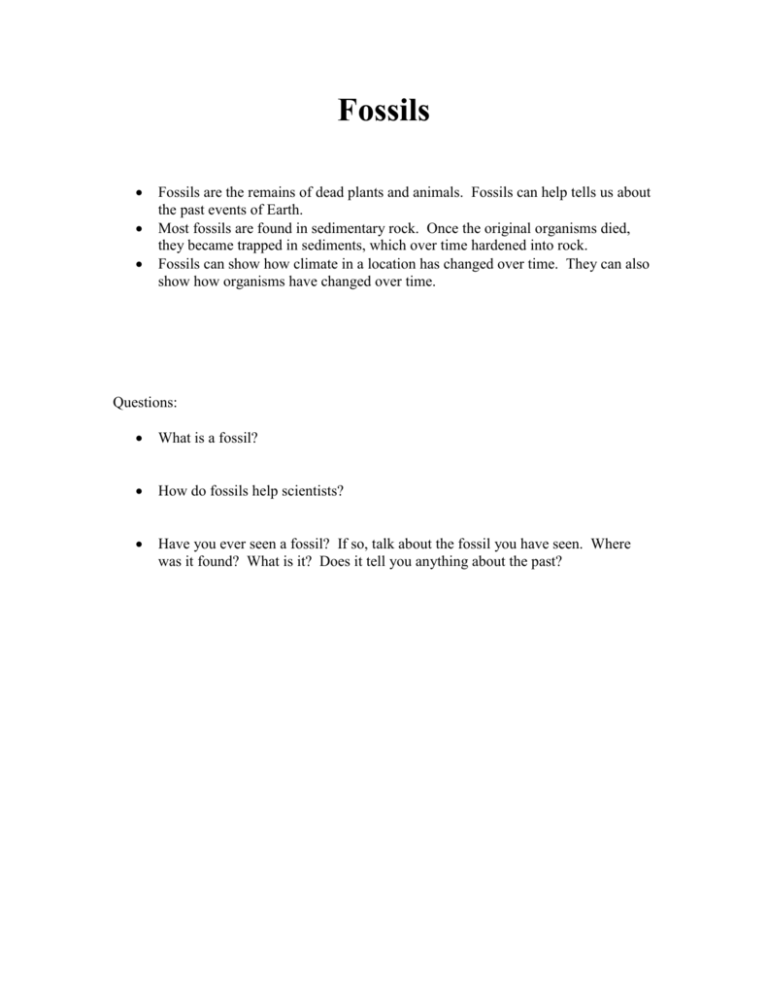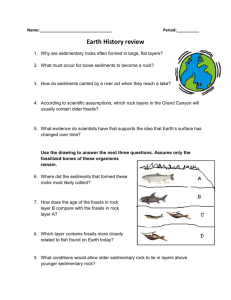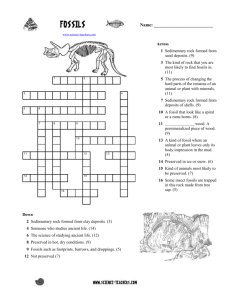Week 7 (fossils)
advertisement

Fossils Fossils are the remains of dead plants and animals. Fossils can help tells us about the past events of Earth. Most fossils are found in sedimentary rock. Once the original organisms died, they became trapped in sediments, which over time hardened into rock. Fossils can show how climate in a location has changed over time. They can also show how organisms have changed over time. Questions: What is a fossil? How do fossils help scientists? Have you ever seen a fossil? If so, talk about the fossil you have seen. Where was it found? What is it? Does it tell you anything about the past? Rock Layers By looking at a cross section of Earth, you can see the many layers of rock and sediments. Some layers may be made of sedimentary rock, some composed of metamorphic rock, and some might be made of igneous rock. The layers closest to the surface are the youngest layers. The layers further down are the older layers. Each layer of rock shows signs of what happened during that time in history. For example, a layer of igneous rock might tell you that a volcanic eruption took place. Questions: How do scientists use rock layers to help study past events on Earth? Where is the oldest rock layer found? Where is the youngest rock layer found? How could a scientist explain fossils of ocean organisms found on a mountain? Sedimentary Rock Sediments are bits of rock, shells, and the remains of plants and animals. Over time, sediments are buried under ground where they are pressed and cemented together. This is called sedimentary rock. Many times fossils can be found in sedimentary rocks. Sedimentary rocks are usually softer than igneous or metamorphic rocks. Limestone is an example of a sedimentary rock. Questions: What are sediments? How are sedimentary rocks made?







